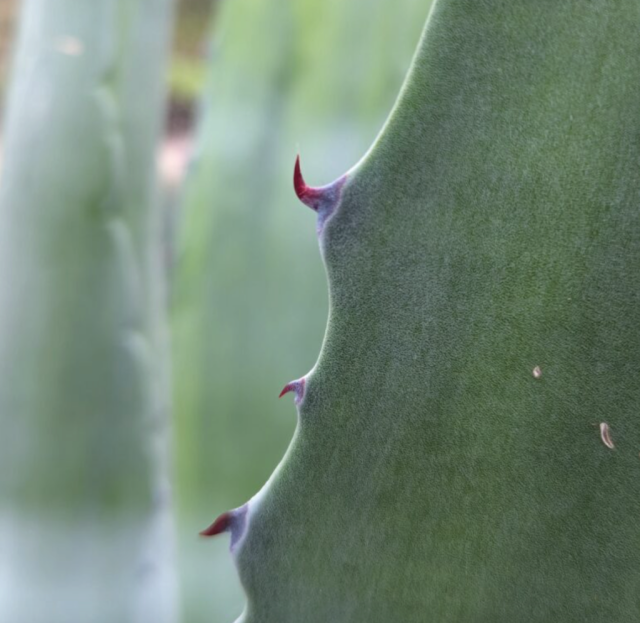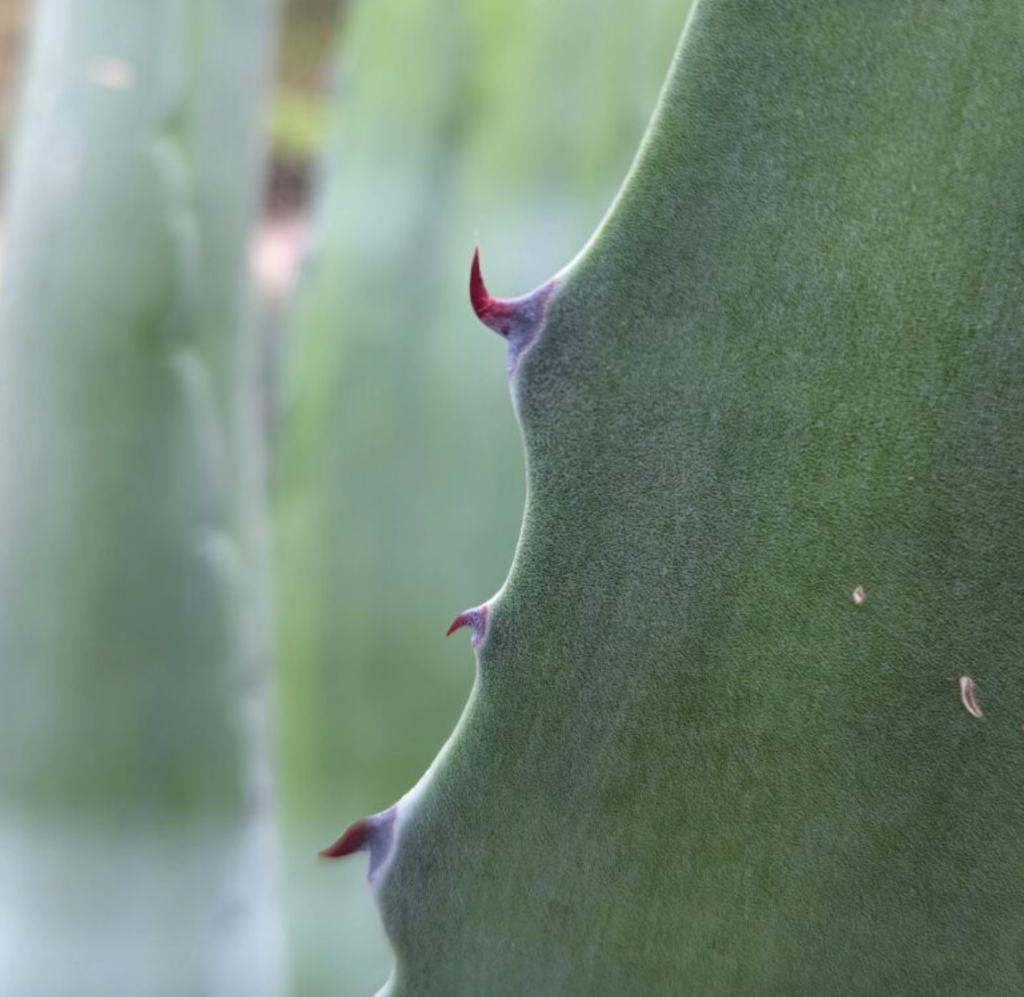

From the website of The Garden Museum:
By Georgie Johnson, Horticultural Trainee. The piece celebrates aspects of the Museum’s ongoing Frank Walter Exhibit.
They had a good run, but thanks to our unheated greenhouse’s unconvincing impression of the Antiguan climate, this week we decided to de-install our display of plants inspired by the life and work of artist Frank Walter.
Some of the most tender species had already migrated inside to dodge the November cold snap; waxy red anthurium and reedy purple sugarcane will now be joined by a small crowd of tradescantias and the remaining canna ‘Cannova Mango’, whose last few boat-like leaves have been hanging on heroically. The more arid species will be relieved to be free of the humidity, ventilation taking second priority to warmth for the sake of their less hardy cellmates. The small aloes and agaves are moving to the airy cold greenhouse, while the bay tree is headed for one of the raised herb beds in the community Healing Garden over the road. The enormous Agave americana, a stand-in for Antigua’s national flower A. karatto, will stay put for now – we don’t want to shock it, plus we are all still traumatised by how hard it was to get in.
Selected in collaboration with guest curator Barbara Paca, who spent time with Frank Walter in his hillside garden in southern coastal Antigua, these are plants that Walter painted, wrote about, and grew in his “botanical wonderland of food, medicine and flowers”, as Paca described it. In the case of sugarcane, this was a plant that Walter made his early agricultural career growing – he became the first Black man in Antigua to reach managerial level at the age of 22, where as an employee of the Antiguan sugar syndicate he found himself in charge of one of the sugar plantations that once belonged to his slave-owning white ancestors. Walter felt himself to be both Antiguan and European, and the planting in this greenhouse spoke to the tangled relationship between these two locations that was deeply embedded in his work and his psyche; a number of the species used here originated in the Caribbean and are now common in gardens throughout Europe as a result of colonial exploration.
While the exhibition of Walter’s work inside the museum (which continues until 25 Feb) has been transformed to capture the warmth and saturated colours of Antigua, the living display outside had to contend with the British winter, so although we chose to highlight the architectural forms and foliage of only those species hardy enough to survive – at least for a few months – we knew the display had a shelf-life. On the occasion of its dismantling, as re-purposed crates and hand-painted labels find new homes or return to old ones, head gardener Matt and I thought we would share a little intro to some of the species in the greenhouse so it can live on.
Anthurium andraeanum
A popular houseplant the world over, red anthurium (Anthurium andraeanum) is of Ecuadorian origin but has naturalised across the Caribbean. Though they appear as flowers, the anthurium’s distinctive scarlet, waxy, heart-shaped blooms – known as ‘flamingo flowers’ – are in fact modified leaves (spathes) which surround the protruding, clustered inflorescence (spadices), much like an Arum. In the rainforests of South America anthuriums are found predominantly as epiphytes, growing from the branches of trees; as indoor plants they are well liked for their durability, their range of colour and reliable blooms.
Passiflora edulis
Though some passion flowers grow well outside in the UK, the edible Passiflora edulis will be happiest in a warm and humid greenhouse – especially if you want delicious passionfruit out of it. Native to Brazil, this vigorous climber needs temperatures of between 20 and 28C to produce the best flavour, but even if a rubbish summer means you don’t get the sweetest fruit, the dramatic flowers are well worth it. A bowl of white petals holds a fringe of purple filaments that radiate out from the centre, where a protruduing green column is topped with prominent stamen and stigma. The name ‘passion flower’ was given by Spanish missionaries arriving to South America in the 1400s, who saw in the complicated form a useful teaching tool to remember the story of the passion of christ (the three stigmas represnt the three nails, the five stamens the five wounds, the corona filaments the crown of thorns, etc.)
Plumbago auriculata
Plumbago auriculata or ‘cape leadwort’ grows in large bushes or thickets on scrubby grassland in its native South Africa and Mozambique, but in temperate gardens it’s most commonly grown as a climber in a cool greenhouse or conservatory – though D G Hessayon says it can make an “outstanding” houseplant if grown around a window. Its long, fast-growing stems are lined with glossy spoon-shaped leaves and tipped with clusters of sky blue flowers that last throughout summer and autumn (ours actually still has one tenacious bloom left).
Agave karatto
The national flower of Antigua, this sizeable agave species produces a branching flowering stem that can reach upwards of six meters, blooming a vivid, acid yellow colour on lateral cloud-like umbels. The hardened stem has been used as a pole for fishing rafts, giving it the common name ‘dagger log’; beneath it cluster a rosette of meter-long, deep green succulent leaves that curve at the edges and are lined with the sharp teeth typical of the genus. In the wild, karatto is found only on the islands of Antigua and Barbuda. We happened to have a magnificent five-foot tall A. americana here at the museum, which stepped in to play the role of its hard-to-find cousin.

Tradescantia pallida
Probably the best known — and most widely planted — of all tender tradescantias (‘spiderworts’), T. pallida extends long stems of purple foliage that form a dense and attractive trailing or scrambling ground cover. Found growing along the Gulf Coast of Mexico, pallida is both shade and drought tolerant, its fleshy leaves and stems water retentive. Owing to its versatility — as a houseplant, seasonal or year-round garden plant, and as a robust and unfussy hanging basket or window box perennial — T. pallida has earned horticultural renown as a plant of enormous merit.
Canna ‘Cannova Mango’
Of the many canna lily hybrids, ‘Cannova Mango’ is one of the shortest at around 75cm high, nevertheless, its salmon pink flowers make it one of the most captivating. Surprisingly hardy, the lush, broad foliage, reed-like stems and long blooming season of this subtropical perennial lend particularly well to growing in containers.
—
I want to say a special thank you to all the brilliant garden volunteers for helping to put the display together – painting pots and shelves, cleaning the greenhouse, dismantling and rebuilding potting benches, taking on the enormous Agave, and being very patient with me while I agonised over the exact placement of each plant (sorry). Shout out to Richard, Tim, Verity, Jane, May, Annabel, Belinda, Laurie, Daphne and Cosima.
Frank Walter: Artist, Gardener, Radical is open until 25 February
From the website of The Garden Museum: By Georgie Johnson, Horticultural Trainee. The piece celebrates aspects of the Museum’s ongoing Frank Walter Exhibit. They had a good run, but thanks to our unheated greenhouse’s unconvincing impression of the Antiguan climate, this week we decided to de-install our display of plants inspired by the life and





